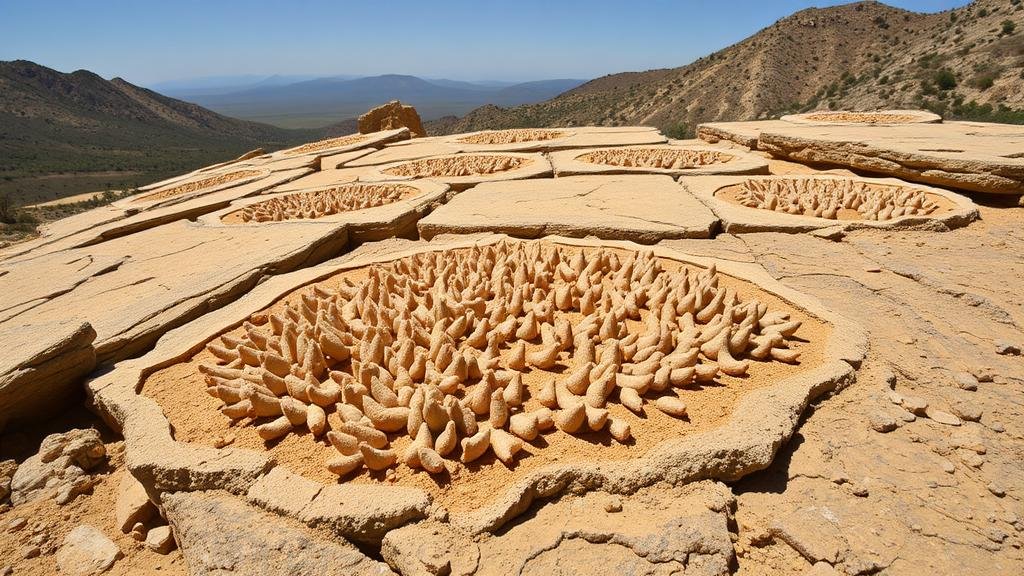Excavating horn coral fossils in the ancient seabeds exposed in the Victorio Mountains.
Excavating Horn Coral Fossils in the Victorio Mountains
The Victorio Mountains, located in southern New Mexico, are a treasure trove for rockhounds and fossil collectors, particularly renowned for their rich assemblages of horn coral fossils. These ancient coral structures, which thrived over 400 million years ago during the Paleozoic Era, provide significant insights into both paleobiology and the geological history of this captivating region.
The Significance of Horn Coral Fossils
Horn corals, belonging to the subclass Hexacorallia, were dominant marine organisms during the Paleozoic Era. Their unique horn-shaped structures, typically made from calcium carbonate, contribute to our understanding of ancient marine environments.
Scientific studies indicate that horn corals played a critical role in the structure of ancient reefs. not only served as habitat for various marine organisms but also participated in the early construction of limestone formations. For collectors, these fossils are significant not only for their beauty but also for their ability to indicate paleoclimate conditions and biodiversity levels of ancient oceans.
Identifying Horn Coral Fossils
When exploring the Victorio Mountains, identifying horn coral fossils involves a keen eye and understanding of their distinct features. Here are primary characteristics to look for:
- Shape: Horn corals typically exhibit a tubular or horn-like shape, distinguishing them from other fossil types.
- Structure: Look for ridges and grooves along the surface, indicative of their growth patterns.
- Color: Most fossils will appear in shades of gray, brown, or even black due to mineralization processes over millennia.
The Geology of the Victorio Mountains
The Victorio Mountains are primarily composed of sedimentary rocks formed from deposits of ancient seas. region showcases layers of limestone, shale, and sandstone that date back to various geological periods. This geological diversity plays a critical role in the preservation of horn corals and other fossils.
According to geological surveys, the sedimentary rock formations in this area were deposited during the late Paleozoic, indicating a vibrant marine ecosystem. Understanding these layers is vital for rockhounds, as certain strata are more likely to yield well-preserved specimens.
Excavation Tips for Collectors
For rockhounds eager to unearth horn coral fossils, following best practices for excavation is crucial. Here are practical tips:
- Research Locations: Not all areas in the Victorio Mountains will yield fossils. Target sites with known fossil horizons, particularly areas with limestone outcrops.
- Use Appropriate Tools: Equip yourself with a geological hammer, chisels, and safety goggles. A small brush can help remove debris from fossils once loosened.
- Practice Patience: Fossil excavation can be labor-intensive. Take time to carefully extract specimens to avoid damage.
Legal Considerations and Conservation
Before embarking on your fossil hunting adventure in the Victorio Mountains, it’s essential to be aware of legal regulations regarding fossil collecting. Depending on land ownership, such as private or state land, collecting rules can vary significantly.
Ensure you obtain necessary permits or permissions if you’re targeting specific areas, especially those on federal land. Plus, practice sustainable collecting methods by:
- Removing only what you can responsibly carry.
- Avoiding destruction of surrounding geology that might house other fossils.
Conclusion: The Collector’s Reward
Excavating horn coral fossils in the Victorio Mountains is not only a fulfilling hobby for rockhounds but also an opportunity to connect with Earth’s ancient history. By understanding the geological context, honing identification skills, and practicing ethical collecting habits, enthusiasts can cultivate a rich collection of these captivating ancient remnants. Remember, each fossil tells a story–through your efforts, you become a part of its narrative.



